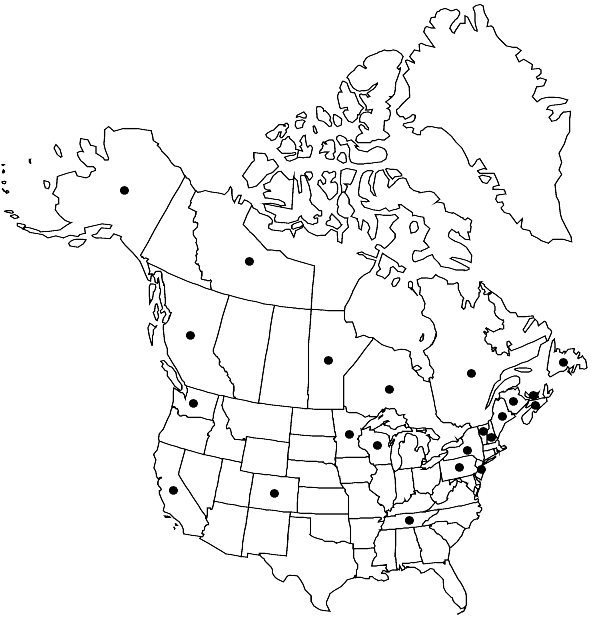Polytrichastrum formosum var. densifolium
J. Hattori Bot. Lab. 37: 389. 1973,.
Plants medium, rather slender. Stems 3–6 (–10) cm. Leaves 6–8 (–10) mm, spreading when moist; marginal lamina 3–5 (–10) cells wide, plane to erect or somewhat inflexed; lamellae (3–) 4–6 cells high, entire or distantly and finely serrulate, the marginal cells narrowly elliptic, not or only slightly thickened. Sexual condition polygamous; males intermingled with the female or male and female inflorescences very rarely observed on the same stem. Capsule rather slender, pale yellowish-brown; hypophysis cylindric but not sharply delimited; peristome teeth 50–64, somewhat irregular in size and shape.
Habitat: Soil or humus in damp to wet, chiefly coniferous forests
Elevation: moderate to high elevations
Distribution

B.C., Man., N.B., Nfld. and Labr. (Nfld.), N.W.T., N.S., Ont., P.E.I., Que., Alaska, Calif., Colo., Maine, Minn., N.H., N.J., N.Y., Pa., Tenn., Wash., Wis., Vt., s, e Asia (Japan), e Asia (Nepal)
Discussion
Variety densifolium is absent from the Arctic, but widespread across northern North America. Most of the eastern North American plants that have been called Polytrichastrum formosum probably belong to this variety, although many of the older herbarium specimens so named are P. ohioense. Variety densifolium is evidently monoicous (see T. Osada 1966), although admittedly this is difficult to demonstrate.
Selected References
None.
Lower Taxa
"broadened" is not a number."um" is not declared as a valid unit of measurement for this property."wide" is not a number.